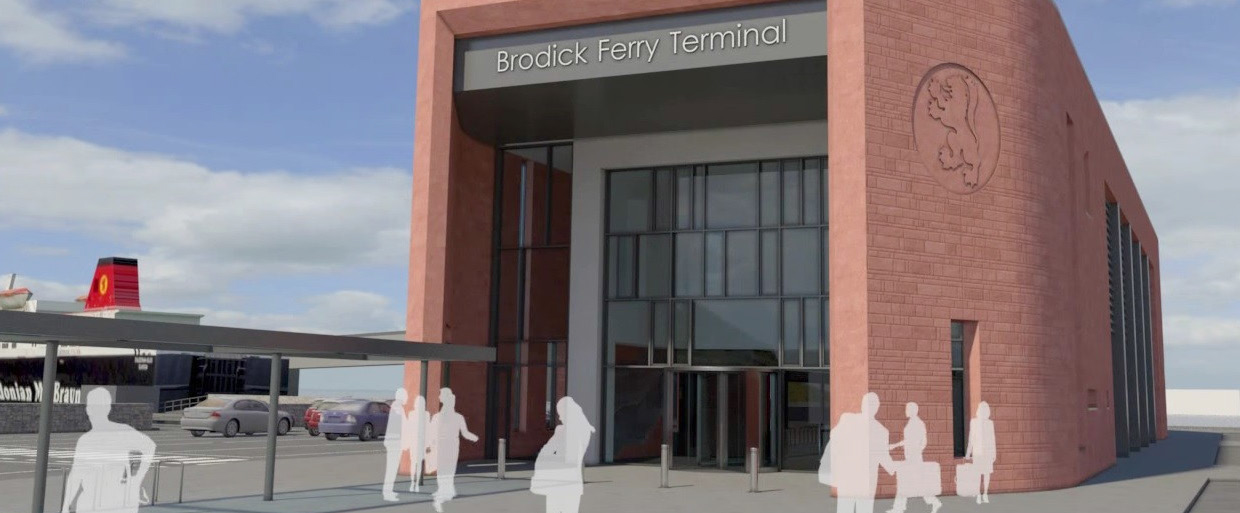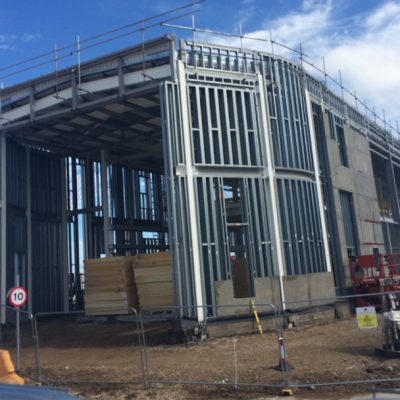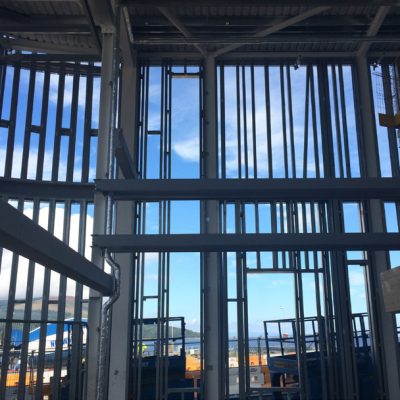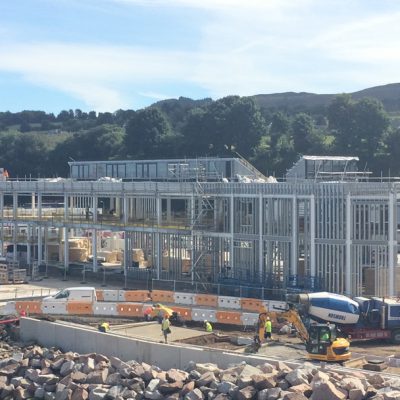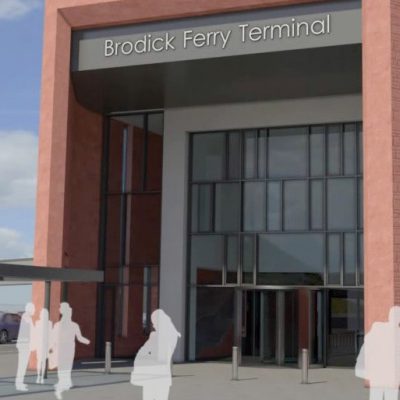EOS were asked to design and supply the Steel Framing System (SFS) to form the inner leaves of the external walls at the New Brodick Ferry Terminal on the Isle of Arran.
The £18m terminal enhances travel between the mainland and will include a new pier and parking in addition to the transport interchange. This facilitates the arrival of a new class of 100m long vessels to be introduced by Spring 2018.
Key Data
Architect:
Norr Architects
Client:
Caledonian MacBrayne
Engineer:
Halcrow Group
Main Contractor:
George Leslie
Installer/EOS Client:
Entec Design Services
Steel Framing System Supplier:
EOS
Materials / Type of System:
Stud & Track
DESIGN AND VISION
All elements were BIM modelled to Level 2 with manufacturing data taken direct from the EOS 3D BIM model, designed and engineered to provide the most cost effective and lightweight solution possible.
The scheme uses both linear and curved facetted elevations to represent the architectural vision in all locations and predominantly consists of SFS external walling of a hot rolled frame superstructure. A range of non-standard items were all encompassed in the EOS scope of design and supply: parapet and twin leaf framing; curved and facetted walls; tall studs to create piers at the fins of each end of the building (over sailing SFS) which provided a robust finishing detail to the canopy area, and use of additional bespoke and off-the-shelf bracketry support elements. The design incorporated 150mm deep studs, whilst achieving challenging stud spans. EOS were able to utilise their new manufacturing capabilities to provide a 150mm deep solution with an increased thickness and flange depth so that a very strong stud section was supplied whilst adhering to the architectural limitations of 150mm sections. This minimised costs and made the system as efficient as possible.
CONSTRUCTION
EOS provided lightweight cold formed C-section studs, designed and supplied cut-to-length with virtually no offcuts to be made on site. All elements were bundled, colour coded and labelled to match the design drawings, enabling a quick and easy location by site teams. Materials were easy to handle on site and could be erected very quickly. This kept the cladding off the critical path, allowing internal trades to begin sooner making best use of the summer period.
The lump sum approach offered by EOS provided all parties with cost certainty. The use of BIM level 2 modelling and design significantly reduced lead times, and manufacture and delivery slots were known and pre-programmed weeks in advance. Due to the schemes remote location, deliveries were pre-planned and phased to make best use of just-in-time delivery. EOS provided dedicated on-site technical assistance as well as quality assurance checks throughout the installation. The product benefits from internal ISO9001 quality checks.
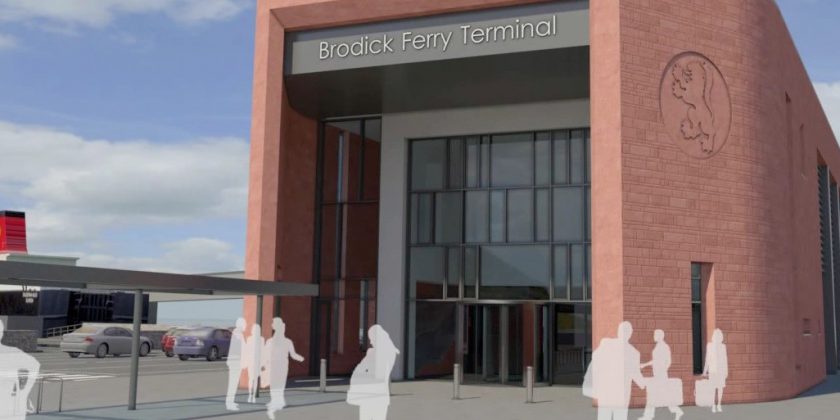
POSITIVE OUTCOMES
EOS were able to meet the tight deadline and the quick, easy and predominantly offsite solution allowed them to overcome the difficult site access. The solution is robust enough to cater for the increased standard wind loads of the island, whilst remaining a highly efficient solution. This strikingly modern terminal demonstrates the immense capabilities of efficient offsite construction methods.
